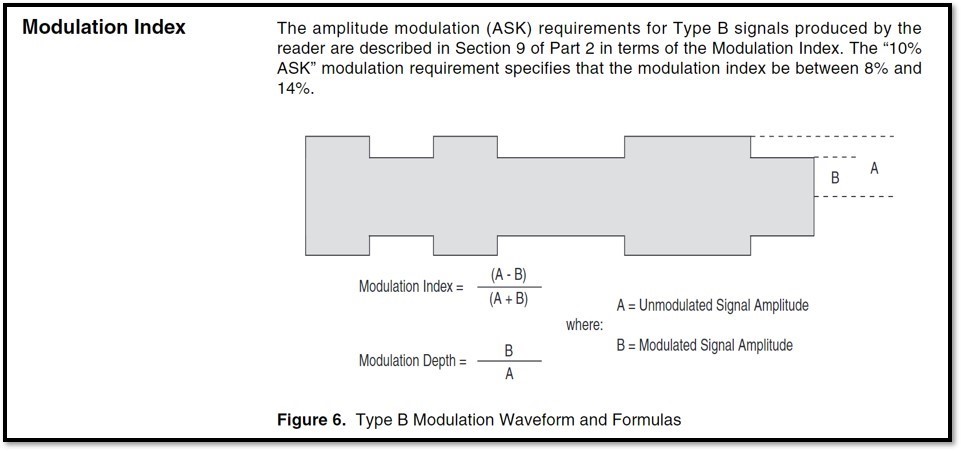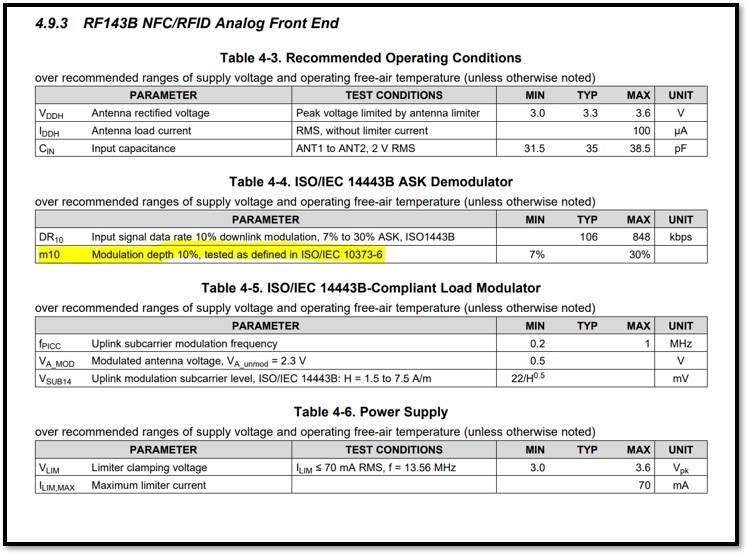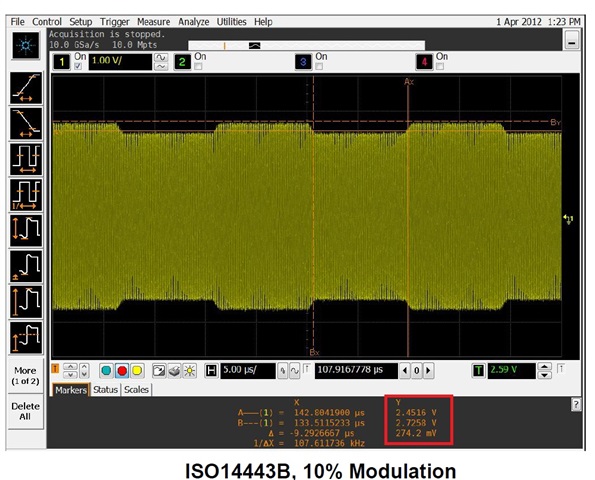Other Parts Discussed in Thread: TRF7970A
Tool/software:
Hi team,
Could you help clarify the data sheet terminology? In section 4.9.3, it shows that the RF430 expects a 7-30% modulation depth for the analog inputs, shown in picture 2 below. Is this actual modulation depth, or modulation index?
To my knowledge, modulation index and index is calculated according to the formulas in the first image below. Where I’m confused is that modulation depth is typically listed as a percentage of unmodulated voltage, but the data sheet seems to list it as the percentage decrease of the unmodified voltage. Can you help clarify if the data sheet is specifying in modulation depth, or is it actually in modulation index?


Thanks,
Luke


